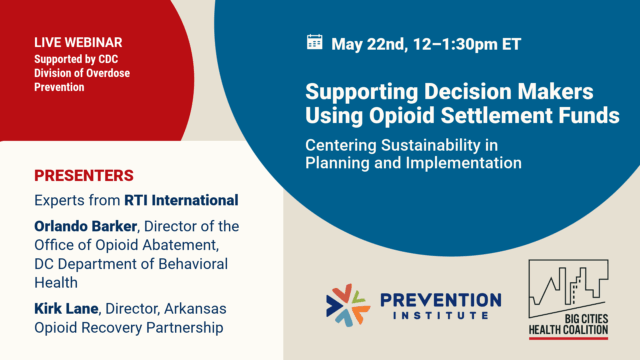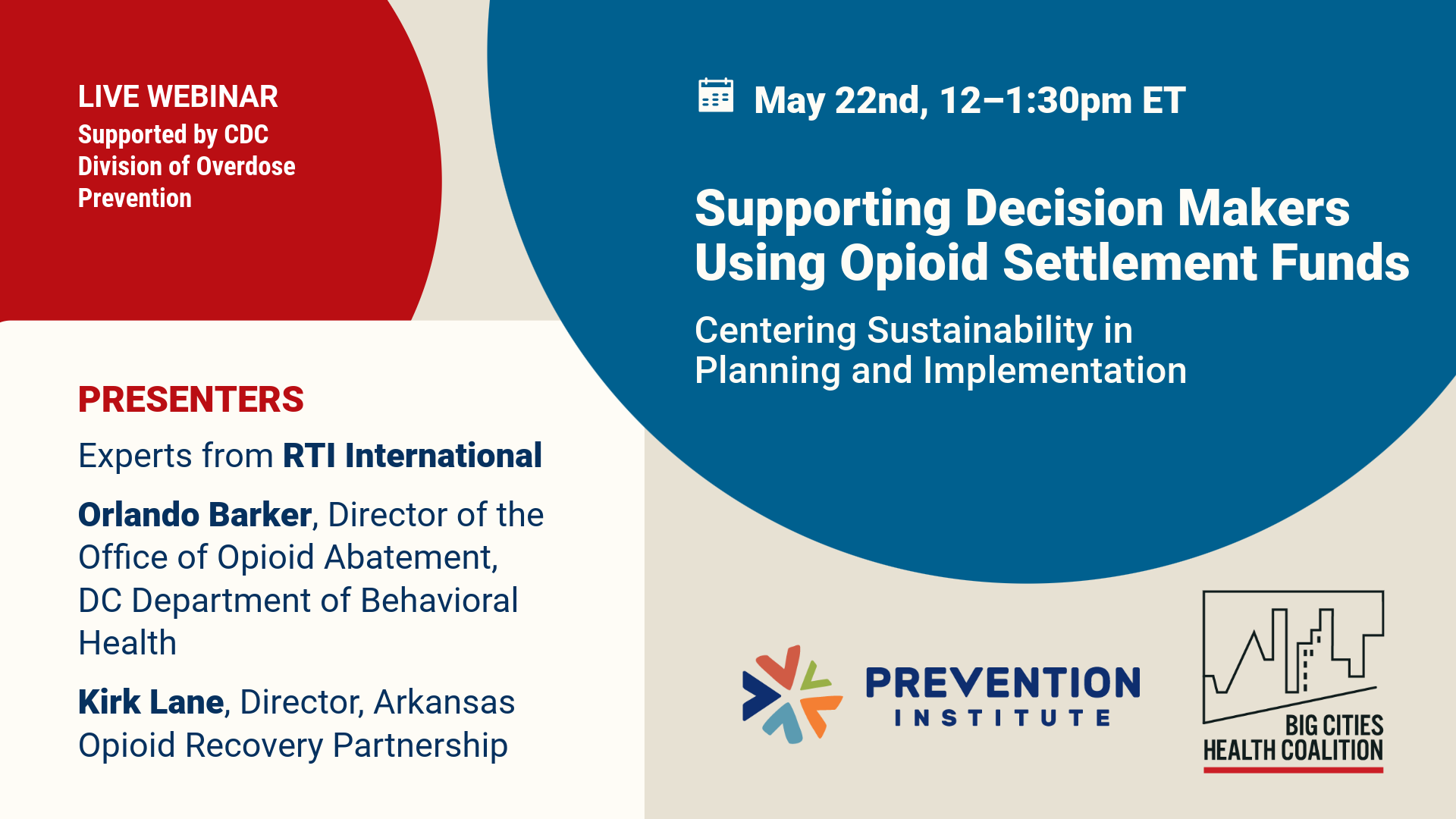Frontline Blog
Webinar recap: opioid settlement funds & sustainability planning
August 2025

In spring 2025, Big Cities Health Coalition and Prevention Institute launched the second installment of the Supporting Decision Makers Using Opioid Settlement Funds* webinar series. The series supports state and local decision- and policymakers as they make strategic investments of opioid settlement funds.
Opioid settlement funds in the US, which by mid-2025 amounted to over $50 billion1, have the potential to make a monumental difference in the ongoing overdose epidemic. For local, state, and tribal governments, this funding provides a historic opportunity to meaningfully invest in public health interventions that prevent overdose and addictions, and ultimately, save lives.
Some decision-makers may not be used to applying a public health lens to the funding allocation process. This webinar therefore offered specific sustainability strategies to help decision-makers create long-term plans for public health interventions funded with settlement dollars.
Centering sustainability in planning and implementation
Researchers from RTI International — Dr. Darigg C. Brown, Dr. Barrett W. Montgomery, Dr. Phillip W. Graham, and Feker Wondimagegnehu — described how various sustainability, evaluation, and measurement approaches can be adopted by decision makers as they navigate barriers, challenges, and opportunities related to settlement funds. These lessons were highlighted and supported by a series of case studies demonstrating successful sustainability strategies including:
The second half of the webinar included a panel discussion with Kirk Lane (Arkansas Opioid Recovery Partnership [ARORP]) and Dr. Orlando Baker (Office of Opioid Abatement, District of Columbia [DC] Department of Behavioral Health), who shared insights from their experiences in sustaining evidence-based interventions and programs funded through opioid settlement dollars. The discussion began with a brief overview from each speaker of their local abatement council’s mission and priorities followed by descriptions of specific programs, strategies, and initiatives for which they are using opioid settlement dollars. Finally, the speakers described what sustainability means within their local context and how their respective teams are working to sustain their efforts.
Following the presentations, an audience Q&A touched on topics related to reimbursements for community health workers, gathering data on overdoses, establishing sustainability through effective data tracking methods such as dashboards, the potential cost benefits of hiring consulting firms for sustainability planning, and strategies for engaging resistant community partners.
Resources shared during the presentation include copies of the national opioid settlement agreements (National Opioid Settlements), approved uses of opioid remediation funds (Approved Uses & Core Strategy for Opioid Remediation Funds), and a summary of the period over which funds will be distributed to states (Executive Summary of National Opioid Settlements). Additionally, participants received resources to guide them in gathering and tracking data to support sustainability (e.g., a 2024 guide from the Prevention Institute and RTI). A full list of sources referenced during the webinar can be found here.
Notes
* This project was supported by the Centers for Disease Control and Prevention of the U.S. Department of Health and Human Services (HHS) as part of a financial assistance award totaling $450,000 with 100 percent funded by CDC/HHS. The contents are those of the author(s) and do not necessarily represent the official views of, nor an endorsement, by CDC/HHS, or the U.S. Government.
[1] National Academy for State Health Policy. (2024, May 17). State opioid settlement spending decisions.
